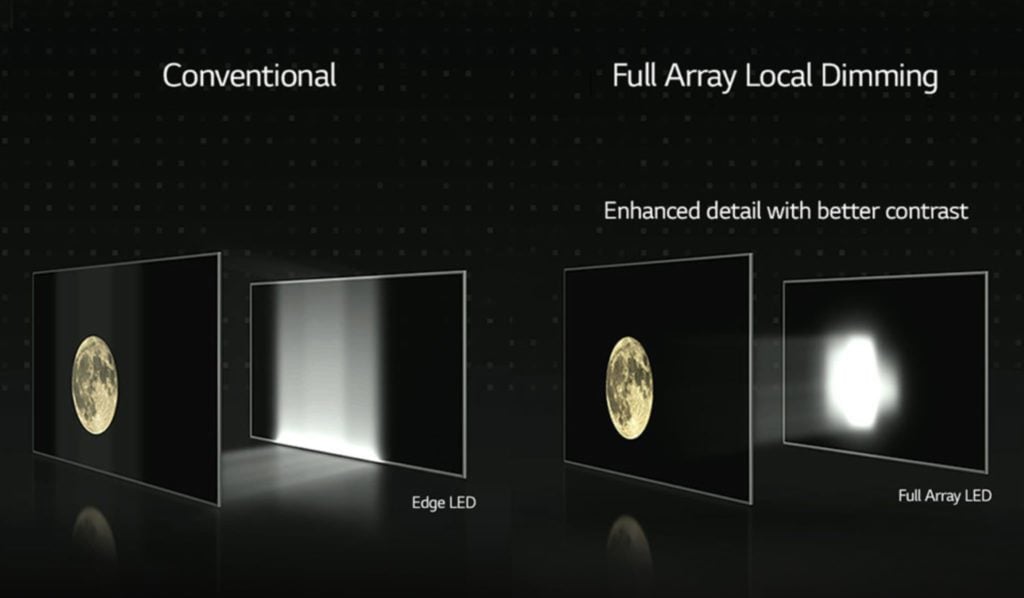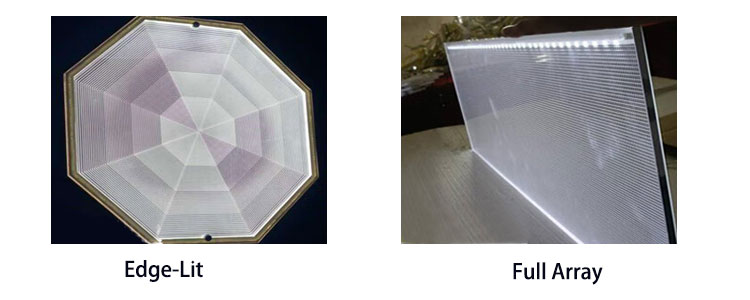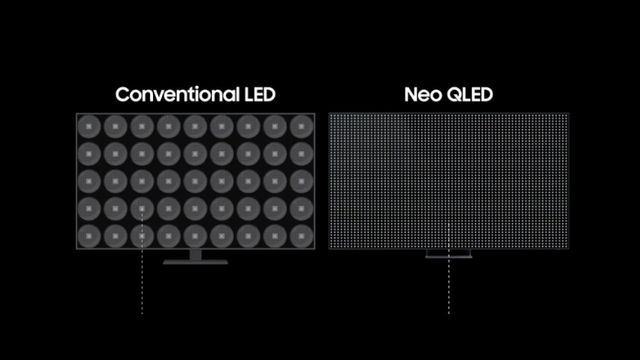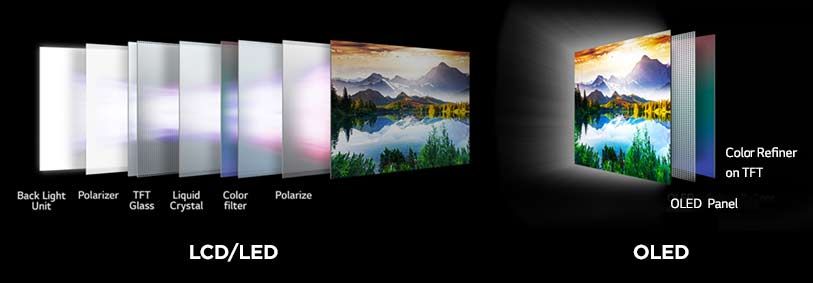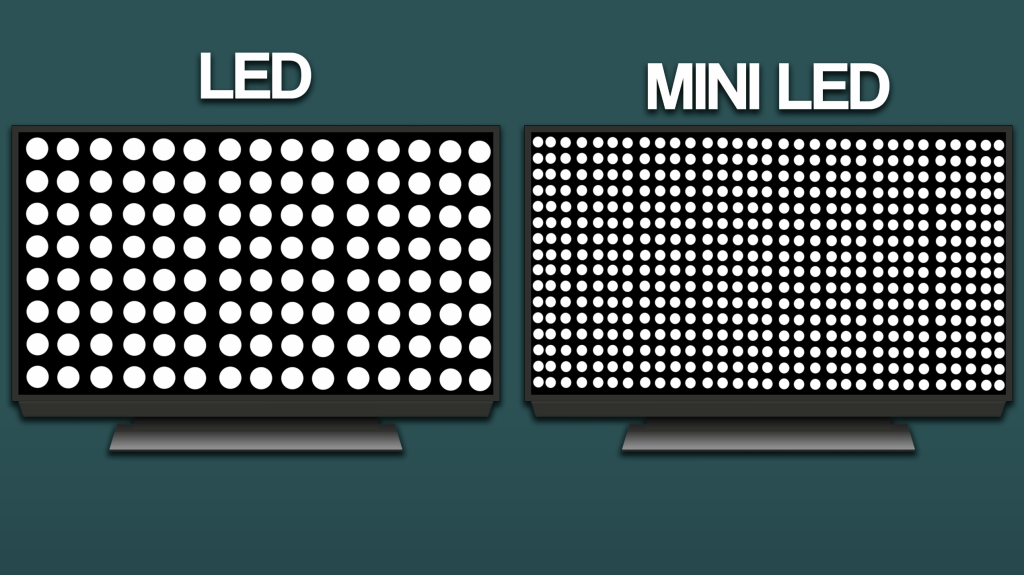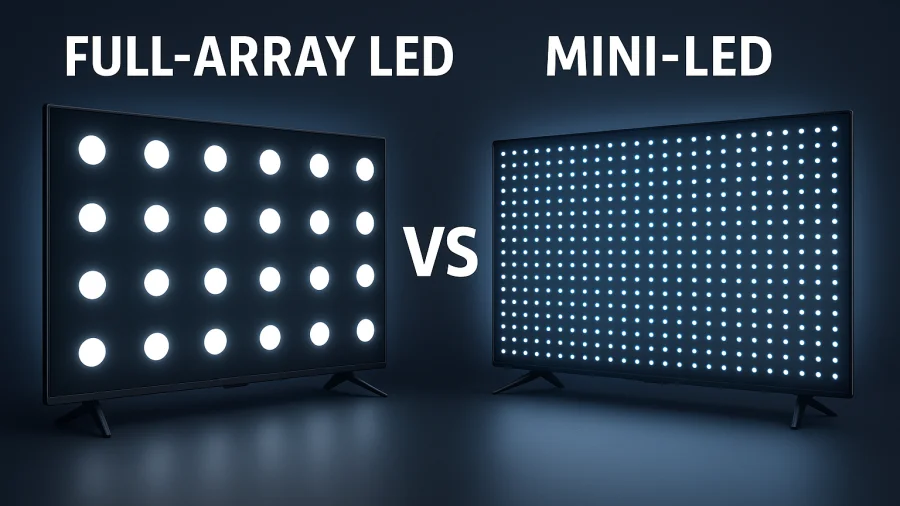Difference Between Full Array And Edge Lit

The quest for the perfect television picture often leads consumers down a rabbit hole of technical specifications and marketing jargon. Among the most critical factors influencing picture quality is the backlighting technology used in LCD TVs, with Full Array Local Dimming (FALD) and Edge-Lit systems representing the two primary approaches. Understanding the difference between these technologies is crucial for making an informed purchasing decision.
At its core, the debate centers on how the TV's backlight illuminates the display panel. The choice significantly affects contrast, black levels, and overall image uniformity. This directly impacts the viewing experience, particularly in dark or dimly lit environments.
Full Array Local Dimming (FALD) Explained
FALD technology positions LEDs directly behind the entire LCD panel. These LEDs are divided into zones, each of which can be individually controlled for brightness. The goal is to darken zones behind black or dark portions of the image, increasing contrast and producing deeper blacks.
The number of zones is a key factor in FALD performance. More zones provide finer control over brightness, leading to less blooming (light bleeding around bright objects on a dark background) and more accurate representation of the on-screen content.
According to display analyst Ross Young, CEO of Display Supply Chain Consultants, "The number of local dimming zones is directly proportional to the improvement in contrast ratio and black level performance." The higher the zone count, the better the image quality.
Advantages of FALD
Superior contrast is the primary advantage. FALD TVs can achieve much deeper black levels and a wider dynamic range compared to edge-lit displays.
Reduced blooming is another key benefit. More precise control over individual LED zones minimizes light bleed, resulting in a cleaner and more defined picture.
Disadvantages of FALD
Higher cost is a significant drawback. The increased complexity and number of LEDs needed for FALD backlighting translate to a higher price tag.
Increased thickness can also be a factor. TVs with FALD backlighting tend to be slightly thicker than their edge-lit counterparts, although advancements in technology have minimized this difference.
Edge-Lit Backlighting Explained
Edge-lit TVs, as the name suggests, have LEDs placed along the edges of the screen. Light is then distributed across the panel using a diffuser. This design allows for thinner and more aesthetically pleasing TVs.
Some edge-lit TVs also incorporate local dimming, but the implementation is often less effective than FALD. Dimming zones are typically vertical strips along the edges, which can lead to noticeable banding and uneven brightness.
Advantages of Edge-Lit Backlighting
Slimmer design is a major selling point. Edge-lit TVs are generally sleeker and more visually appealing than FALD models.
Lower cost is another advantage. The simpler design and fewer components make edge-lit TVs more affordable.
Disadvantages of Edge-Lit Backlighting
Poorer contrast is a significant limitation. Black levels are typically not as deep, and the overall contrast ratio is lower than that of FALD TVs.
Uneven brightness can also be a problem. Achieving uniform brightness across the entire screen can be challenging, particularly in larger sizes.
More noticeable blooming is also a drawback. Edge-lit TVs are more prone to light bleed around bright objects, especially those employing edge-lit local dimming.
The Bottom Line
The choice between FALD and edge-lit backlighting depends largely on budget and viewing preferences. If picture quality is paramount and budget is not a major concern, a FALD TV will generally deliver a superior viewing experience.
However, if aesthetics and affordability are the primary considerations, an edge-lit TV might be a more suitable option. Just be aware of the potential compromises in contrast and black level performance.
Ultimately, the best way to determine which technology is right for you is to compare TVs side-by-side in a well-lit environment, paying close attention to contrast, black levels, and uniformity. Consider your typical viewing environment to choose the TV that will deliver the best viewing experience for your needs.


